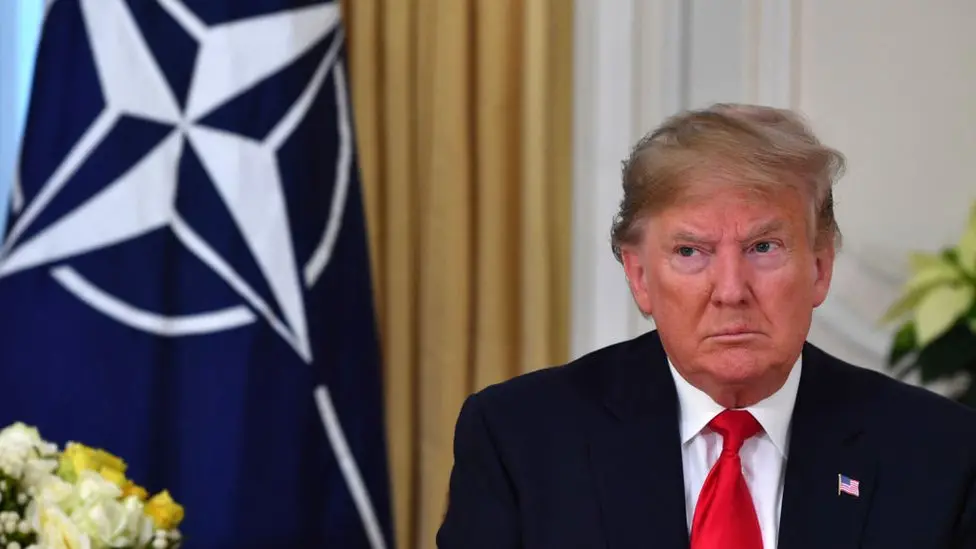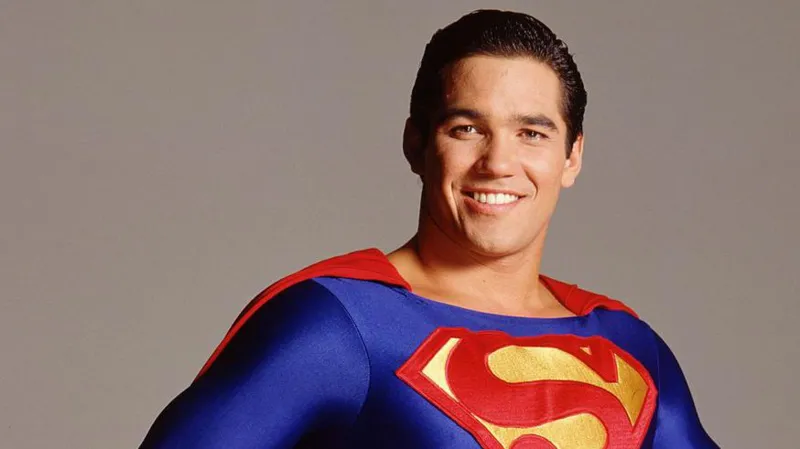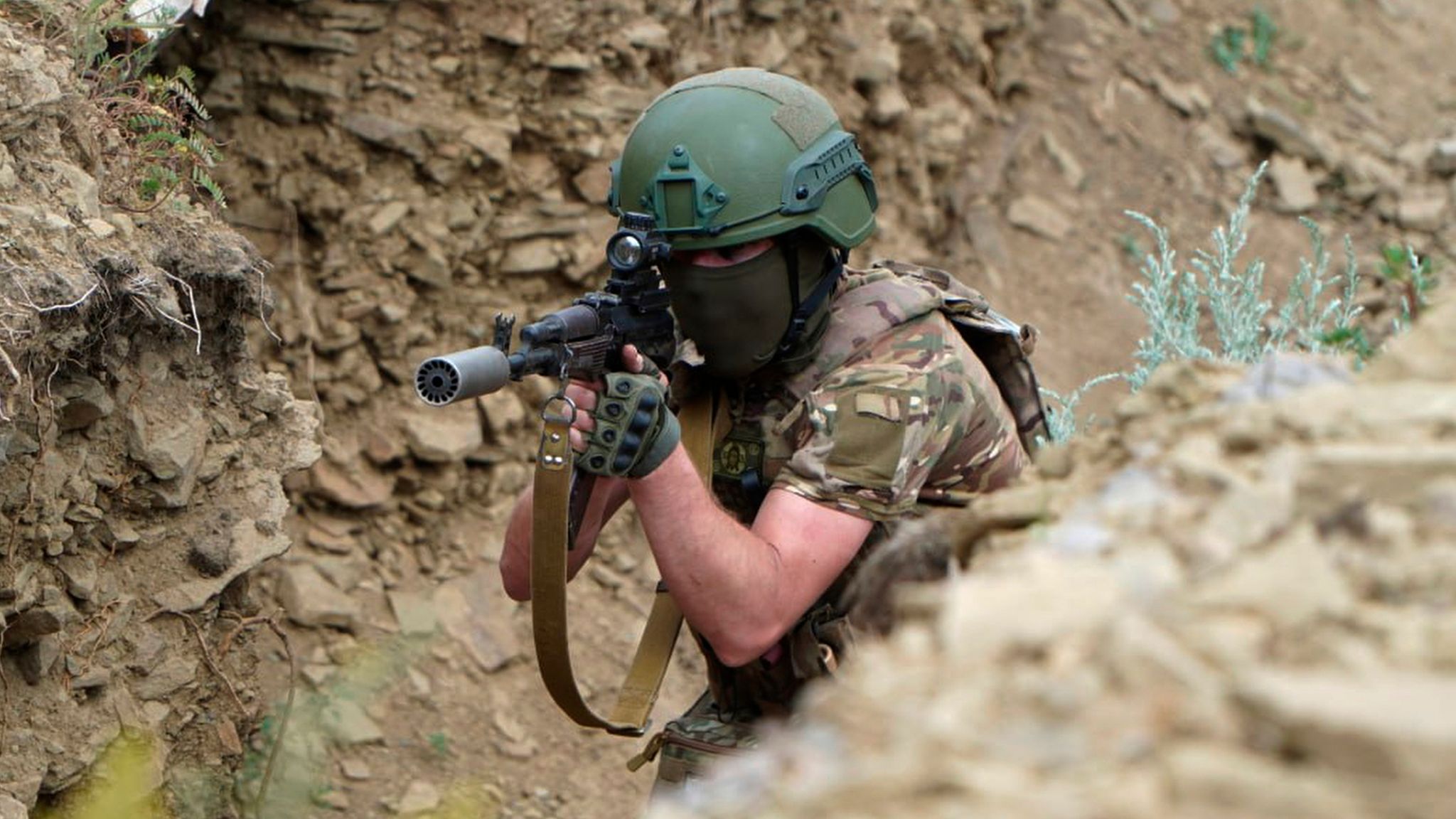What is Nato, why isn't Ukraine a member and is defence spending increasing?
Prime Minister Sir Keir Starmer has said the UK will increase defence spending to 2.5% of national income by 2027.

Nato currently asks member states to spend at least 2% on defence - but US President Donald Trump has called on European countries to spend much more than that target.
Trump has been dealing directly with Russia to try to broker a peace deal in Ukraine, calling into question America's support for the Nato alliance.
What is Nato and why was it set up?
Nato - the North Atlantic Treaty Organization - was formed in Washington DC in 1949 by 12 countries: Belgium, Canada, Denmark, France, Iceland, Italy, Luxembourg, the Netherlands, Norway, Portugal, the UK and the US.
Nato's primary purpose, external was to block expansion in Europe by the former Soviet Union - a group of communist republics which included Russia.
Members agree that if one of them is attacked, the others should help defend it., external
Nato does not have its own army, but member states can take collective military action in response to crises.
For instance, the body supported the UN by intervening in the war in the former Yugoslavia between 1992 and 2004.
It also co-ordinates military plans and carries out joint military exercises., external
Which countries are Nato members?
Nato has 32 members across Europe and North America - the original 12 founders plus 20 countries which have joined since 1949.
After the Soviet Union's collapse in 1991, many Eastern European countries became members, including Albania, Bulgaria, the Czech Republic, Estonia, Hungary, Latvia, Lithuania, Poland, Romania and Slovakia.
Having been neutral for decades, both applied to Nato in May 2022, shortly after Russia invaded Ukraine.
Ukraine, Bosnia and Herzegovina, and Georgia have also asked to join.
Why isn't Ukraine a Nato member?
Russia has consistently opposed the idea of Ukraine becoming a member, fearing it would bring Nato forces too close to its borders.
However, in 2008, the alliance said that Ukraine could eventually join, external.
After Russia's invasion, Ukrainian President Volodymyr Zelensky asked for this process to be fast-tracked.
Former Nato chief Jens Stoltenberg said Ukraine could join "in the long term" but not until after the war ended.
However, speaking at a defence summit in Brussels in February, US Defence Secretary Pete Hegseth said "the US does not believe that Nato membership for Ukraine is a realistic outcome of a negotiated settlement".
Some Nato defence chiefs pushed back against the comments.
German defence minister Boris Pistorius said "he regretted" the decision to rule out Ukraine joining Nato without a wider discussion. Sweden's defence minister Pal Jonson insisted membership was "not off the table".
Zelensky later said he was prepared to "give up" his presidency if it meant Ukraine could join Nato.
"If to achieve peace you really need me to give up my post, I'm ready," he told reporters.
"I can trade it for Nato membership, if there are such conditions."
What else has Trump said about Nato?
The Trump administration's decision to align itself with Russian President Vladimir Putin over the war in Ukraine has cast doubt on America's long-term commitment to both European security and Nato itself.
In votes at the United Nations in New York, to mark the third anniversary of the Russian invasion, the US twice sided with Russia instead of its Nato colleagues.
European leaders are having to react quickly to a changing security situation.
Incoming German Chancellor Friedrich Merz said his "absolute priority" in office would be to strengthen Europe as quickly as possible "so that, step by step, we can really achieve independence from the USA".
Nato leaders are due to meet in June but Merz questioned whether that summit would involve Nato in its current form "or whether we will have to establish an independent European defence capability".
How much do Nato members spend on defence?
In January, Trump urged Nato's European members to spend 5% of their national income - or GDP - on defence, external, telling reporters: "They can all afford it."
Hegseth echoed this call, saying the US would no longer "tolerate an imbalanced relationship" with its allies.
Nato secretary-general Mark Rutte has also urged member states to boost their defence spending.
It is thought that 23 countries met the 2% target in 2024, compared to only three in 2014.
The countries which have traditionally spent the largest share of GDP on defence are the US and those close to Russia, such as Poland and the Baltic states.
Sir Keir - who is due to meet Trump in Washington at the end of February - has said the UK will increase its defence spending from 2.3% of GDP to 2.5% by 2027.
This would mean an extra £13.4bn of defence spending every year from 2027, he told House of Commons.
The rise would be funded by cutting the UK's aid budget from 0.5% of GDP to 0.3%, Sir Keir said.
Before the general election, Labour had promised to raise development spending by the same amount.
How much money have Nato countries given to Ukraine?
Nato previously described Russia's invasion of Ukraine as the "most significant and direct threat to allies' security"., external
The alliance has not sent troops to Ukraine or enforced a no-fly zone over the country for fear of being pulled into a direct conflict with Russia.
However, individual member states have supplied arms and equipment.
German research organisation the Kiel Institute, external said that under former President Joe Biden, the US had allocated 59.9bn euros (£49.7bn) for military support to Ukraine between February 2022 and October 2024.
European Nato members provided 52.6bn euros (£43.7bn) over the same period.
The US, UK, Germany and Turkey and others have sent anti-tank weapons, missile defence systems such as Patriot, artillery guns, tanks and drones.
The US, UK and France have also supplied long-range missiles such as Atacms and Storm Shadow/Scalp.
In August 2024, Ukraine received two US-made F16 fighter jets - the first of more than 60 pledged by Nato member states.
Since November 2024, the US and UK have allowed Ukraine to use their missiles to hit targets within Russian territory.
Hegseth has suggested the US will significantly scale back its support for Ukraine, and that European nations will have to provide the majority of military aid.
UK Defence Secretary John Healey said the UK had "heard a clear message from the US about stepping up and we are". He highlighted a new £150m package which includes drones, tanks and air defence systems.
-BBC







